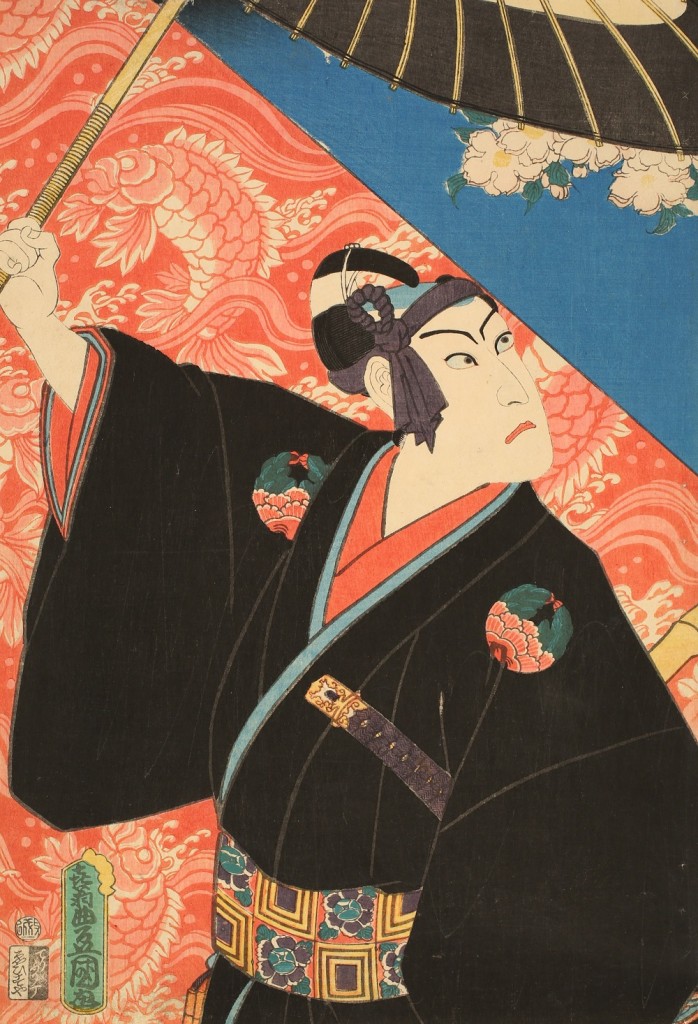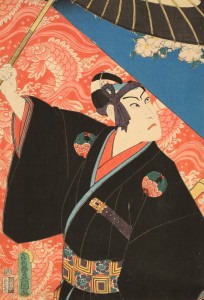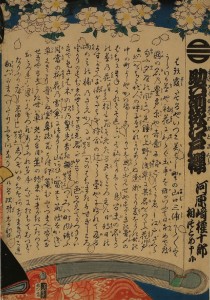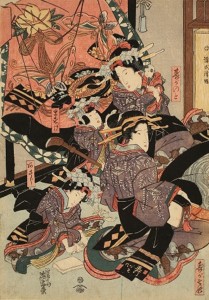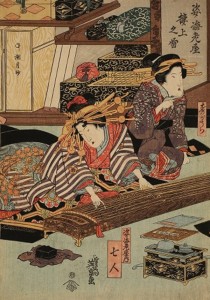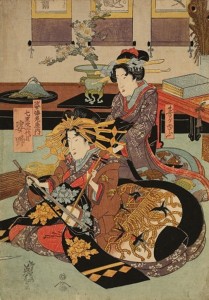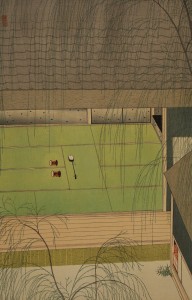秋は芸術、行楽、食欲とさまざまな楽しみ方がありますが、浮世絵にも、風景・行楽、植物、食べ物、そして秋にまつわる和歌や物語に取材した作品が多数あります。そこで今回は“秋”をテーマに、Ⅰ.新版画、Ⅱ.広重の名所絵、Ⅲ.文芸に関連する物語絵・美人絵・役者絵、Ⅳ.芳年の「月百姿」と、画題別の秋の切り取り方をご覧いただきます。吉田博や川瀬巴水などの新版画は圧巻の美しさですし、広重、国芳、芳人などの月ゆかりの作品は昔の風景や秋に対する当時の人々の思いを伝えてくれます。芸術の秋の一日、浮世絵にみる秋をご堪能下さい。
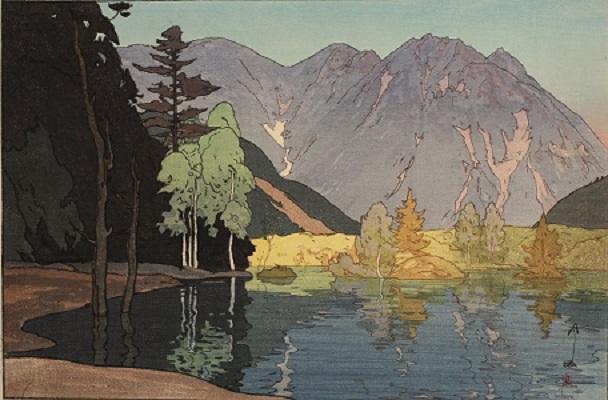
Autumn is filled with pleasures like art, excursions and bon appetites. There are many Ukiyo-e prints featuring sceneries, excursions, plants, dishes, also, Japanese poems and tales associated with autumn. “Autumn” is the theme of this exhibition, presenting aspects of autumn through the following.
Ⅰ. New Prints (Shin Hanga)
Ⅱ. Pictures of Famous Places by Hiroshige
Ⅲ. Pictures of Tales, Beauties, and Actors Related to Literature
Ⅳ. ”One Hundred Views of the Moon” by Yoshitoshi
Shin Hanga by Yoshida Hiroshi, Kawase Hasui and others are outstandingly beautiful. Works related to the Moon by Hiroshige, Kuniyoshi, Yoshitoshi and others present scenes from the good old days and people’s thoughts on autumn back then.
We hope you will truly enjoy autumn charms through Ukiyo-e on an autumn day, perfect for appreciating art.
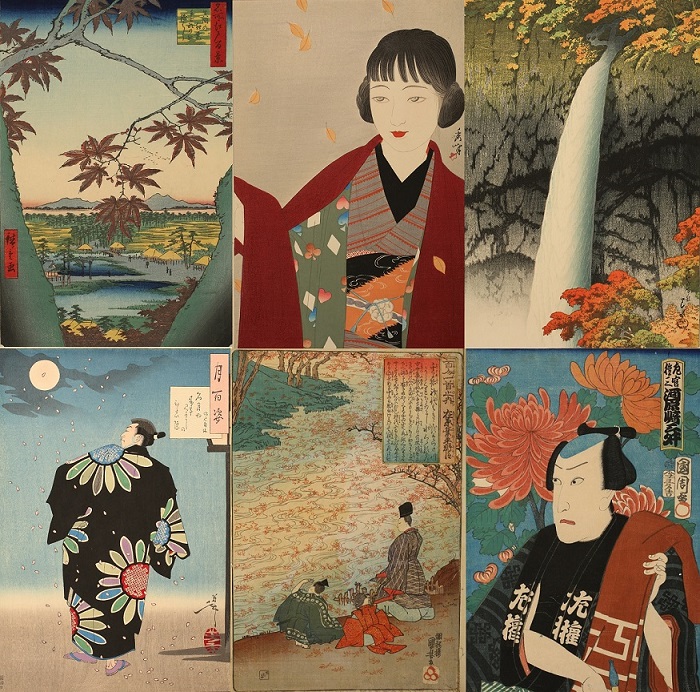
歌川国芳(うたがわくによし1797-1861)の出世作は、文政10年(1827)頃から刊行された大判揃物「通俗水滸伝豪傑百八人之一個(壱人)」です。国芳の迫力ある筆の力とそれを支えた彫師、摺師の技は必見です。今回は本館所蔵の大判全図を中心に中判、和漢準源氏、そして安永3年正月に浅草奥山で行われた生人形展に関連した生人形シリーズ、さらには先輩後輩絵師たちの影響作も展示いたします。涼しい博物館で“熱き英雄たち”の浮世絵をごゆっくりとお楽しみ下さい。
In 1827, Utagawa Kuniyoshi (1797-1861) rose to fame with the publication of the ōban (26.5 x 39cm) series, “108 Heroes of the Suikoden”. The power of Kuniyoshi’s brushstrokes and the incredible skill of his supporting woodblock carver and printer technicians are not to be missed.
In this exhibition, we feature the complete ōban series of these works from our collection, along with chūban-sized (19.5 x 26.5cm) prints, the “Japanese and Chinese stories in imitation of the Genji novel’” series, and the “Living Dolls” series that takes place in Okuyama district of Asakusa at New Years in 1774.
Further, the exhibition also displays works by later artists and contemporaries that were influenced by Kuniyoshi. Enjoy the hot heroic passion of these ukiyo-e masterpieces in the cool of our museum.
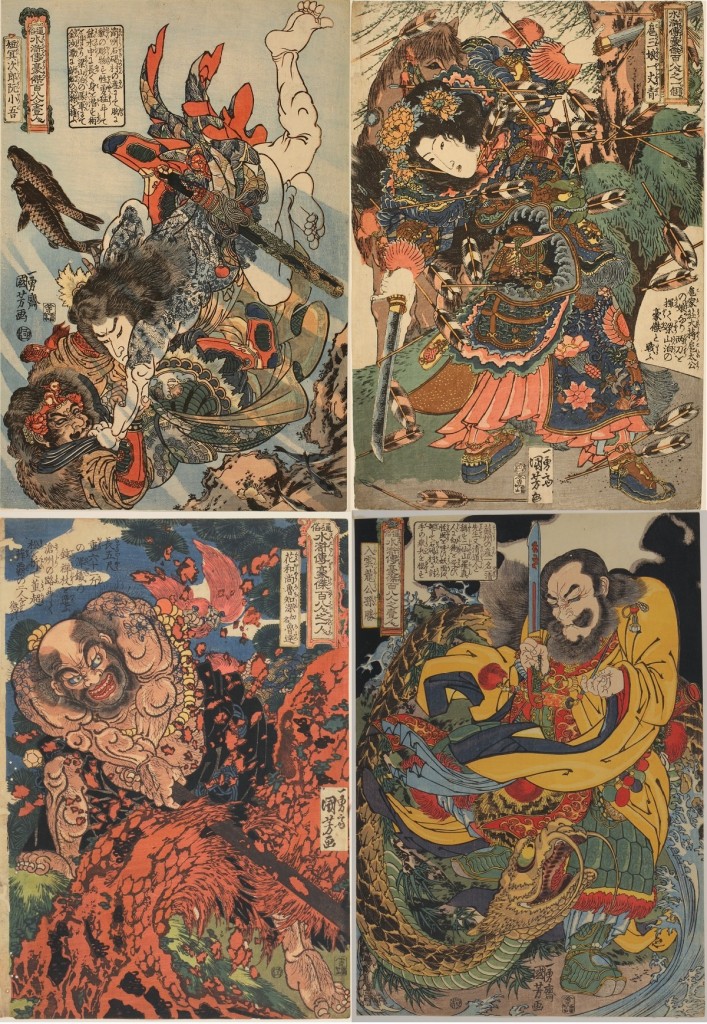
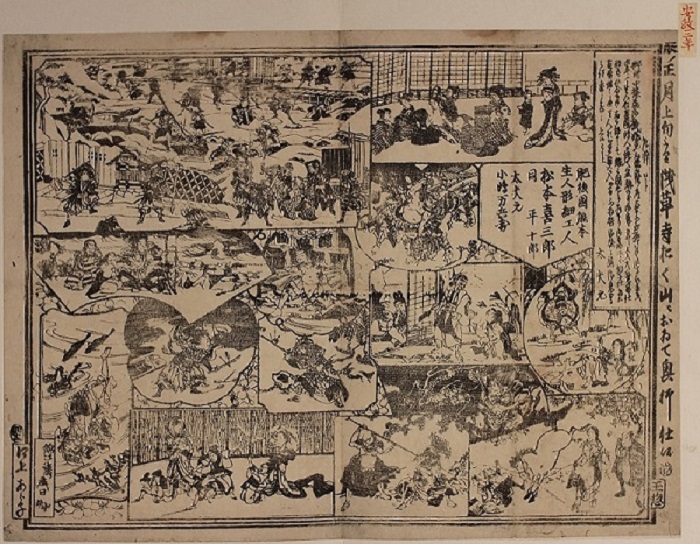
春は花の季節。自然を愛し、自然と親しみ、自然と一体化して暮らしてきた日本人は、桜が大好きです。今回は桜を描き込んだ歌麿、英泉、豊国、広重、芳年、年方、巴水、吉田博らの名所絵、美人絵、役者絵などを展示いたします。上野や隅田川沿いの桜、吉原仲之町の桜、歌舞伎と関わりのある桜、伝統的な技術に洋画表現を融合させた吉田の新版画「櫻八題」など、心行くまで博物館のお花見をご堪能下さい。
Spring is the season of flowers. Japanese people, who love nature, are close to nature, and have lived in harmony with nature, love “sakura” (cherry blossoms). The current exhibit is of works that contain sakura, by such artists as Utamaro, Eisen, Toyokuni, Hiroshige, Yoshitoshi, Toshikata, Hasui, and Yoshida in landscapes, bijinga,yakusha-e, and more. Please enjoy cherry blossom viewing at the museum with the cherry blossoms of Ueno and along the Sumida River, cherry blossoms of Yoshiwaranakanomachi, cherry blossoms related to kabuki, and Yoshida’s shinhanga, “Eight Scenes of Cherry Blossoms”, which fuses Western expressionist painting with traditional techniques.
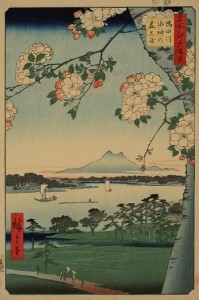
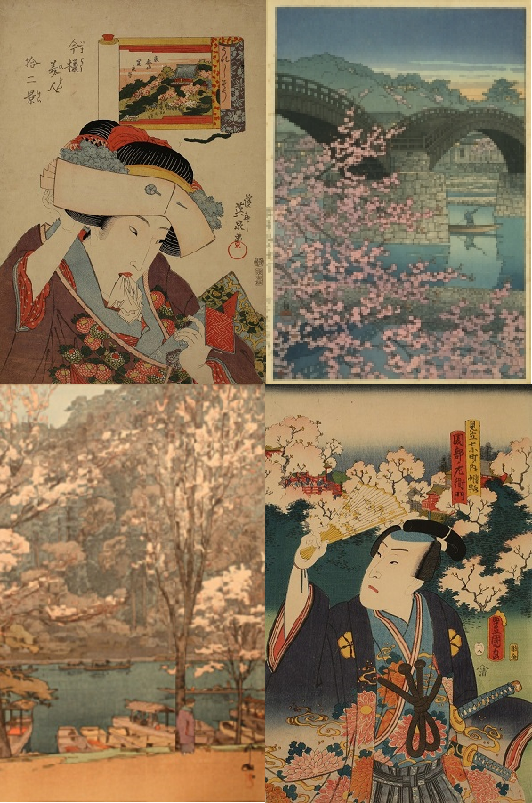
日本の歌舞・音曲は、古代の神楽が原点ですが、まだ太鼓や笛だけのお囃子でした。
室町期の世阿弥(1363?-1443?)の出現により、演劇の本質が加わり、
永禄期(1550s)に三味線が入ってきて、浄瑠璃、歌舞伎へと飛躍的な発展を遂げました。
Although ancient kagura (sacred music and dance) was the starting point for ongyoku (Japanese song and dance accompanied by shamisen music), it was still only accompanied by drum and flute. Later, with the appearance of Zeami (1363? – 1443?), of the Muromachi Period, the essence of theatre was added. In the Eiroku Period (1550s), the shamisen joined the mix, and the dramatic development of joururi (Japanese ballad drama) and kabuki was thus achieved
